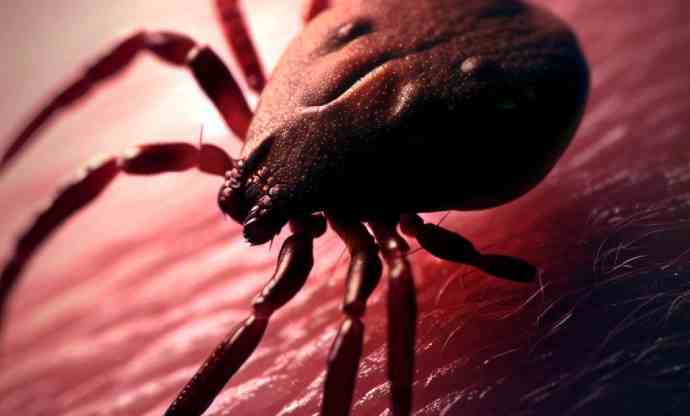 The story of the last case in chronological order of a few days ago of a 5-year-old boy from Castrovillari, in Calabria, hospitalized in serious condition after a tick bite due to a serious infection, brings attention back to this type of parasite . The overheating of the climate means that ticks in Italy are active for a longer period of time during the year. Also, their living space has expanded in recent years due to higher temperatures. In fact, tick activity is closely linked to temperature and humidity values and, although there are some exceptions, their activity is generally concentrated in the warm months. In fact, during the winter season they tend to protect themselves from the coldtaking refuge under the stones or burying themselves in depth :
The story of the last case in chronological order of a few days ago of a 5-year-old boy from Castrovillari, in Calabria, hospitalized in serious condition after a tick bite due to a serious infection, brings attention back to this type of parasite . The overheating of the climate means that ticks in Italy are active for a longer period of time during the year. Also, their living space has expanded in recent years due to higher temperatures. In fact, tick activity is closely linked to temperature and humidity values and, although there are some exceptions, their activity is generally concentrated in the warm months. In fact, during the winter season they tend to protect themselves from the coldtaking refuge under the stones or burying themselves in depth :
Soft ticks can overwinter in rock crevices or in cracks in the walls of chicken coops and animal shelters. As temperatures rise, they become active again and remain so until the following autumn. However, the climate changes underway can cause the period of activity of the ticks to vary according to local situations. The preferred habitat of ticks is represented by places rich in grassy and shrubby vegetation, with environmental preferences that depend on the species. The wood tick thrives in cool, humid climates while the dog tick mostly frequents hot, dry climates or where the vegetation is sparser. The presence of ticks essentially depends on the presence of hosts to be parasitized in the area. For this reason, places like stables, animal shelters and pastures are among their favorite environments. In general, ticks are not very selective in choosing the organism to parasitize, but they can choose different animal species from dogs to deer, squirrels and humans:
The same species that feed on large mammals can also parasitize birds when they are in the larva and nymph stage. The blood meal, during which the tick remains constantly attached to the host, takes place within hours for soft ticks, days or weeks for hard ones. Ticks do not jump or fly on the hosts on which they feed but generally move to the edge of herbaceous plants or bushes waiting for the passage of an animal to cling to (humans included):
Thanks to the carbon dioxide emitted and the body’s heat, these parasites can sense the presence of a possible host and settle there by sticking their rostrum into the skin and starting to suck its blood. The bite is generally painless because the ticks inoculate the host with a certain amount of saliva which contains anesthetic principles. If we do not notice it, ticks usually remain attached to the host for a period that varies between two and seven days and then let themselves fall spontaneously. The tick bite is not in itself dangerous for humans: the health risks depend on the possibility of contracting infections transmitted by these animals as vectors. In Italy the most common tick-borne diseases are:
tick-borne encephalitis or Tbe (mainly transmitted by wood tick), Lyme disease (mainly transmitted by wood tick), rickettsiosis (mainly transmitted by dog tick), tick-borne relapsing fever , tularemia , tick-borne meningoencephalitis and ehrlichiosis . At the end of last year, researchers from the University of Zurich in Switzerland also documented for the first time that local ticks carried a new virus, Alongshan (ALSV), discovered in China in 2017. it can lead in the worst case to an inflammation of the brain.
It remains to be seen whether ALS infections can have similar consequences and how often they occur. Compared to the encephalitis virus (FSME), there is currently neither a vaccine nor a test method for ALS viruses. There are some precautions to significantly reduce the chance of coming into contact with ticks, or at least to detect them quickly, before they can transmit a disease. In general, Giovanni D’Agata , president of the ” Rights Window “, recommends 6 protection measures against ticks:




